American car companies – GM and Ford especially – get heckled a lot and justly for repackaging their economy cars and trying to sell the lipstick-on-a-pig’d result as luxury cars. Examples of this include the infamous “Cadillac” Cimarron – which was a Chevy Cavalier affixed with the wreath and crest – and a twice-as-much price tag. It was a manifestation of blatant contempt for the Cadillac buyer – and for the legacy of Cadillac – that GM never recovered from.
Neither has Jaguar – which tried the same thing in the early 2000s, with the interesting difference that it tried to re-sell another car company’s economy car as its own car.
This was the ill-starred X-Type.
It was conceived as a not-necessarily-bad-idea. Jaguar – Britain’s well-known luxury sedan brand – observed Mercedes-Benz and BMW expanding their market base by offering smaller, entry-level models like the 3 Series (BMW) and the Mercedes 190 Class (later rechristened C-Class), which were priced within range of people not yet able to afford a traditional – and traditionally expensive – BMW or Mercedes. But who – it was expected – would be able to afford one, eventually. In the meanwhile, bring them into the fold with a BMW or Benz they could afford, right now.
With the key point being a BMW – or a Mercedes – they could afford.
The early 3 Series BMWs and Benz 190s were BMWs and Benzes, respectively. Certainly, they were smaller, not-as-fancy BMWs and Benzes – and not as prestigious to own. But no one could deny their pedigree. There wasn’t someone else’s car under their badges. Or someone else’s engines under their hoods.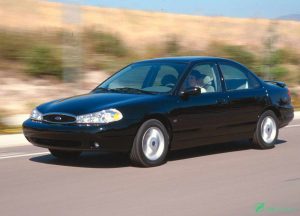
They may not have been thoroughbreds, but they weren’t bred elsewhere.
And that was Jaguar’s mistake.
Though – to be fair – it wasn’t actually Jaguar’s mistake.
When the X-Type was conceived, Jaguar was the property of Ford, which had acquired Britain’s then-struggling luxury car brand and subsumed it under the umbrella of what was styled the Premier Automotive Group, or PAG – which also included Aston Martin and even Volvo, believe it or not. Ford – under the leadership of CEO Jacques Nasser – spent a reported $17 billion to acquire these brands, which it hoped would allow it to leverage economies of scale as well as common/shared platforms to both lower costs and increase profits.
It worked a lot like GM’s divisional branding structure in the latter days, when the once largely independent divisions that had previously had their own engine shops – such as Pontiac, Buick and Oldsmobile – were shorn of them and reduced to re-sellers of generic “GM” platforms, differentiated by badge and price but largely identical, mechanically. It is arguably why there no longer is a Pontiac or Oldsmobile division – and Buick lingers chiefly because of the badge’s unfathomable popularity among the Chinese.
It was decided – by Ford corporate – that the Jaguar brand needed a new small car. Something to compete with the small cars being sold in numbers by BMW and Mercedes. Bur rather than give Jaguar the means to design its own small car – as BMW and Mercedes designed small cars of their own – it was decided to re-sell a small Ford as a “Jaguar” – and hope no one noticed.
The re-badged, re-branded small car was Ford’s Contour sedan – which was itself a rebadged/re-sold version of the Mondeo sedan sold by Ford in Europe. It was not a bad car; there was even a high-performance SVT version with snappy V6/manual transmission that emulated the very successful Taurus SHO sedan that Ford sold a bunch of in the late ’80s and early ‘90s. That one was equipped with a high-revving Yamaha-sourced DOHC V6 and did a lot to buck up both the reputation of Ford as well as the appeal of the Taurus, which prior to getting the SHO (Super High Output) treatment was best known for being a solid family car and a staple of rental car fleets.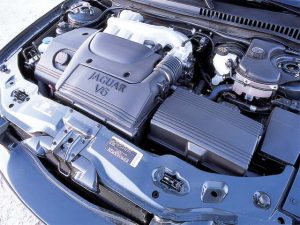
But that street only goes one way.
It is one thing to make a Ford more appealing by infusing it with an interesting engine. It is another thing to try to make a Jaguar out of a Ford.
Nevertheless, Ford tried.
Under the styling direction of Simon Butterworth and Wayne Burgess, the Mondeo/Contour was re-skinned to look like a smaller-scale XJ Series sedan. It ended up looking pretty good. It even had the traditional Jaguar “leaper” hood ornament.
But under the skin – and under its hood – it was all Ford.
There was no Jaguar in-line six, let alone a V12. There was Ford’s Duratec 2.5 liter V6, same as in the Mondeo-Contour but fitted with a “Jaguar” engine cover. It was also mounted sideways – transversely – because the Mondeo-Counter was a front-wheel-drive car, as most economy cars are. The problem there – for Jaguar – was that luxury cars generally weren’t. At least, not the real ones. The ones actually made by other luxury car brands, like BMW and Mercedes.
The “Cadillac” Cimarron was front-wheel-drive, because it was a Cavalier under its skin. The BMW 3 and the Benz 190/C-class were based on rear-drive layouts, which separated them from FWD economy cars like the Cavalier/Cimarron. FWD is advantageous in an economy cars because it reduces manufacturing costs. There are fewer components – the rear axle as a separate assembly is eliminated in favor of a combined transmission/axle assembly called a transaxle that is mounted directly to the engine in a much more compact package that is easier to fit under the hood and inside the smaller engine compartment of small economy cars.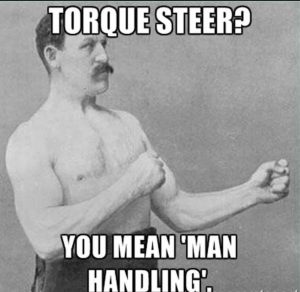
It also offers better traction in poor weather than the rear-drive layout because the car pulls itself along rather than pushing itself forward. But there are several serious downsides – if you’re trying to build a luxury car. The first is weight imbalance. With most of the drivetrain’s weight over the front wheels, a FWD car tends to be front-heavy, which inclines toward understeer when the car is driven fast. There is also the problem of torque steer – which arises when the drive wheels spin and hop (under load) while the driver is trying to steer.
Finally, there is the intangible downside of FWD being associated with less-prestigious cars. High-end cars being almost exclusively rear-drive cars – at that time, at least.
Jaguar – well, Ford – figured it could hide the X-Type’s Mondeo-Contour kinship by adding all-wheel-drive to the mix. This would serve the dual purpose of establishing mechanical separation between the X-Type and Mondeo-Contour, which were front-drive-only – and give the X-Type something actual Jaguars of the time did not even offer.
The X-Type’s standard AWD system also addressed the problem of torque steer, which arises as a result of expecting the wheels that propel the car to also steer the car. It is a problem in powerful front-drive cars, especially – or was, at the time – before the development of sufficiently sophisticated electronic controls capable of discreetly modulating the FWD car’s tendency to jerk left (and wheel hop) under hard acceleration, forcing the driver to countersteer the car to keep it going in a straight line. By diverting some of the engine’s power to the rear wheels when the front wheels begin to break traction, that problem is solved.
But the underlying – the under the hood – problem remained.
There was nothing objectionable about the Ford 2.5 liter Duratec V6 engine. Unlike the awful Cavalier-sourced four cylinder engine used in the “Cadillac” Cimarron, which was just as prone to head gasket failure under the hood of a Cimarron as it was under the hood of a Cavalier. It was essentially a sound engine and it also made 194 horsepower, a respectable (and competitive) number for an entry-luxury sedan in the early 2000s. It compared well – by the numbers – with the ’02 BMW 3 Series’ standard 2.5 liter in-line six, which only rated 184 horsepower and the ’02 Mercedes-Benz C-Class’ 2.3 liter four cylinder engine, which made 192 horsepower.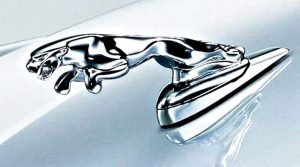
At the time, neither the BMW nor the Benz was available with AWD, either.
But prestige is as much an intangible as an objective. It is why, no matter how quick a Corvette is – or even if it is quicker than a Ferrari – it will never be in the same class as a Ferrari. It is also why the X-Type was unable to convince many buyers to pay Jaguar money – $29,950 in 2002, the first year of availability – for an all-wheel-drive Mondeo-Contour, notwithstanding the leaper hood ornament and some real wood trim inside.
That sum – about $46,000 in 2021 dollars – amounted to nearly twice the cost of a Mondeo-Contour equipped with the same basic engine (though sans the AWD and wood veneer). When you pay that kind of money, you expect more than a Ford under the hood. Or at least, most people expect it.
The X-Type did offer another engine – a 3.0 liter V6 that made 231 horsepower, which was much more horsepower than you could get in a Mondeo-Contour. But the same problem remained and – worse – could not be hidden. The car was still a reskinned Mondeo-Contour with AWD, meant to obscure its lowly FWD economy car underpinnings.
There is a an assumption that the car press will not raise the hood – or compare the specs – and thus, the potential buyer will be unaware that he is being asked to spend twice as much for the same Ford, wrapped more nicely, perhaps. This is a breathtaking leap of effrontery, when you consider that – as a rule – people in a position to spend nearly $50k on a car are usually not stupid people. Arguably, the stupid people are those who drag the honor of a formerly prestigious brand like Jaguar (or Cadillac) through the muck for the sake of making a fast – so they hoped – buck.
It did not pan out that way, for either.
Ford had hoped to sell at least 100,000 rebadged Mondeo-Contours annually, apparently to Jaguar buyers not savvy enough to realize they were paying double for a reskinned Ford. Instead, Ford offloaded about 350,000 over the course of the car’s eight-year production run. This works out to about 45,000 cars annually, just shy of half the hoped-for volume.
As the Cimarron did for Cadillac, the X-Type did for Jaguar. Neither brand recovered the prestige it lost by going the cheap and easy, rather than doing it right – as BMW and Mercedes did, with their mass-market small cars. Which continue to be successful cars, more than a decade after the last X-Type was stamped out.
. . .
Jaguar X-Type Trivia:
-
- There was some Jaguar DNA available under the hood of the X-Type. Its optional 3 liter V6 was more or less the same engine as the one that came standard in the S-Type, which was Jaguar’s mid-sized luxury-sport sedan (made from 2000-2008). But the S-Type, itself, was also made under the auspices of PAG and shared an underlying chassis with the Lincoln LS as well as the Ford Thunderbird, neither of which are Jaguars.
- The X-Type was not only the first Jaguar to come standard with all-wheel-drive, it was the last Jaguar to offer a manual transmission – as well as the first Jaguar to offer a four cylinder diesel engine, beginning with the 2003 model year.
- In addition to the sedan, there was also a wagon variant of the X-Type.
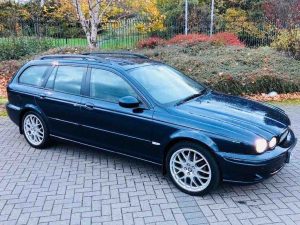
- Standard equipment included Connolly leather seats, climate control (rather than Mondeo-Contour manual control) air conditioning, Sapele real wood veneers, which were made at the same Browns Lane Veneer Manufacturing Centre in the UK that made the real wood trim bits that went into other Jags.
- One could order the X-Type with a variety of high-end amenities, including suede Alcantara headliner, a 320 watt Alpine stereo and rain-sensing windshield wipers, among other items. Fully loaded, an X-Type Estate’s sticker price could exceed the equivalent in 2021 dollars of $50,000.
- The X-Type’s standard all-wheel-drive system was marketed as Traction 4 and featured a viscous-coupled center differential and 40-60 (front to rear) power split, designed to impart the road feel of the rear-wheel-drive luxury sedans from BMW and Mercedes-Benz that Jaguar/Ford hoped to compete with.
- Ford – under Nasser’s successor, Alan Mulally – eventually dissolved PAG and Jaguar went on the auction block in 2008. Its current owner is the Indian conglomerate, Tata Motors – which also owns what’s left of Land Rover.
- The Chinese own Volvo.
Excerpted from the forthcoming (soon!) book, Doomed.
. . . .
Got a question about cars, Libertarian politics – or anything else? Click on the “ask Eric” link and send ’em in! Or email me at [email protected] if the @!** “ask Eric” button doesn’t work!
If you like what you’ve found here please consider supporting EPautos.
We depend on you to keep the wheels turning!
Our donate button is here.
If you prefer not to use PayPal, our mailing address is:
EPautos
721 Hummingbird Lane SE
Copper Hill, VA 24079
PS: Get an EPautos magnet or sticker or coaster in return for a $20 or more one-time donation or a $10 or more monthly recurring donation. (Please be sure to tell us you want a magnet or sticker or coaster – and also, provide an address, so we know where to mail the thing!)
My eBook about car buying (new and used) is also available for your favorite price – free! Click here. If that fails, email me at [email protected] and I will send you a copy directly!


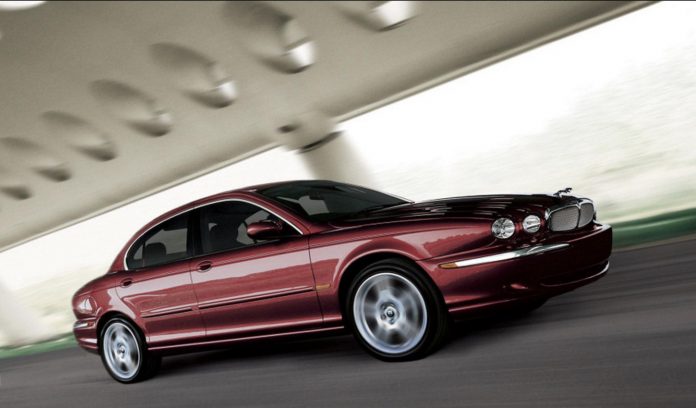









Great write up from when market forces determined the success of any given car and not government intervention. For the car industry that basically ended in 2008 with the fed takeover of the American car industry. And hell via regulation most of the foreign industry as well. A few stragglers of good design left today but rapidly going extinct.
Thanks, Mark!
The book is done – and in process. Should be available soon!
Hey Eric, love reading these articles – nice little read to get your mind off the more depressing crap happening in the world….
really love Jaguars – though it is sad now how crap they’ve made the base spec ones…. what do you think will happen to JLR ? There are rumours that tata is looking to offload, as well they are having issues making money out of it, and recently they were close to letting it go bankrupt (probably hoping for bailout money). Then along came the Rona and it’s all quiet on that front – I suspect a bailout was had in some form under the cover of the sickness that would kill us all if big corporates didn’t get kickbacks….
You hearing anything of the sort ?
Hi Nasir,
Thanks! And, regarding Jaguar:
I think it’s a case of dead man walking. Jaguar was once a distinctive brand that sold cars very different in style and feel from those made by other premium brands, such as BMW and Benz. Each catered to a different taste. Today’s Jags are almost indistinguishable from the homogenous herd of look-alike, feel-alikes. Especially the crossover SUVs. Of all the things a Jaguar isn’t… but now tries to be. It’s sad. Classic Jaguars such as the E Type, XJ and XJS were recognizable at a glance and remain to this day as iconic for their uniquely British elegance as a classic Benz 190 embodies the Teutonic alternative.
I cringe over the ugly plasticized sameness that afflicts the new car landscape; the jacked-up, Oprah-assed crossovers. It hurts my soul.
Ford had the Cougar, so they had to have the Jaguar.
There they were, gone.
Human ingenuity needs to be beat into submission, don’t need any of it. The morale will improve.
Can’t have people inventing internal combustion engines, Luddites say so.
James Watt needlessly improved the steam engine to 80 percent efficiency. Who wants that? Created a whole industry, manufacturing plants became technological marvels. Time to kill King Coal!
Nikola Tesla should have been taken out behind the barn and shot. Good riddance. Too smart for his own good.
The Village Idiot of Warshington is the Commander-in-Chief.
Yeah right.
Thankfully, Nikola Tesla improved the human condition exponentially.
7000 US military combatants with orders to shoot to kill has the Taliban scared shitless, if the truth be known.
It’s a Mexican stand-off in Afghanistan.
One can say this car was ahead of its time considering the German “luxury” marques now offer many mass market cars.
I also didn’t know this was a Contour. That actually makes it more appealing. I just assumed it would be a dangerous/expensive-to-own European luxury car. Also didn’t know you could get it with AWD and a manual. I like it.
When a big company comes knocking with a check, they are often looking to squeeze you for all your company’s worth, ruin it, then sell off the pieces.
Luckily the PAG subsidiaries seem to have emerged more or less ok.
Eric,
One, discerning person wanting a quality car WOULDN’T go with a Jaguar! Two, the Ford components were likely better than what Jag offered.
that was always the knock against Jags. Looked pretty cool, but spent a lot of time as a lawn ornament.
I’m wondering about reliability too. Until a couple of years ago I used to see these everywhere. I like it.
One could argue that at that time, Ford mechanicals were better than those offered with “real” Jags.
At least the “X-Type” did not sport an electrical system by Lucas……”The lord of darkness”
And that Wagon body looked pretty nice.
About 12 years ago, a coworker drove a 2002 X-type. That inspired me to purchased a 2003 S-type so I could get a real RWD car. If I didn’t have to spend about 6k keeping the 92k mile running for 3 years, I would have kept the car. I had to renew all of the suspension, the AC wasn’t working and it had cooling system issues caused by the use of cheap plastic.
In retrospect, I wish I would have kept the car as a weekend toy and bought a Corolla for commuting purposes. The S was the smoothest car I have ever owned next to my Lexus ES300. I enjoyed the feel of the rwd and the muted growl of the 240HP V6. I miss that car
Didn’t know this stuff. Thanks for the lesson.
You bet, Chris!
I’m having fun putting this together; I’m about 90 percent done. Then, the editing and formatting… god help me.
I do remember the GM blunder called the Cimmarron but had no idea about the Ford/Jaguar car. I do know that GM had another blunder called a “windowed main” engine block design used for Olds engines from 1976-1990 260, 307, 350 & 403 C.I. Engines. The bottom end of the block had thin main webbings and open “windows” between the bottom cylinder walls and the engine mains. The engineering reason was to save weight and money on material castings. Result was an engine that could not be modified for more power because of a weak bottom end that would throw a rod into the oil pan. Too bad to, there are thousands of G-Body car enthusiasts out there that would love to improve performance but have to either find a pre 1975 olds engine , a Chevy engine or go with the LS.
Dad tried to talk me into buying one of these 10 years ago. I test drove it, used with about 70k on the clock. It was actually a damned nice little car, but I wasn’t willing to part with 8 grand for a used ford with much nicer trim.
Nice article. Never knew all this about the guts of these cars. I didn’t understood the design appeal of them once under the Ford umbrella. They looked a little too much like . . . a Ford. I’m not against Ford vehicles; we had a ’94 Aerostar that we kept for 12 years. They usually don’t make crap. But I’ve never found their basic sedans very stylish (well the Taurus was a bold design – have to give them credit on that model – it really had distinctive looks for the time) – I thought Chrysler products were better looking, but maybe they weren’t as good quality as Ford. But a luxury brand shouldn’t resemble a basic Ford or Chrysler.
I wish car designers weren’t so tied down to emissions standards, aero-dynamics and everything else and could maybe just produce a nice looking car.
Going the other way, making Fords out of Jaguars, didn’t work out for them either. See the retro Thunderbird.
Used now, may be a helluva bargain. That 2.5L duratec Ford is a good engine. Combined w/manual, AWD and in a wagon body would be a great utility car! (Tired of being cornered into Subarus…)
‘There is an assumption that the car press will not raise the hood’ — EP
Gag me with a tire spoon! Those who don’t open the hood don’t belong in the car press.
Maybe there should be a gearhead-oriented exam to qualify.
Those who fail can always scribble agitprop for the Slimesand the WaPo: just rip copy off the Operation Mockingbird teletype, change up the paragraph order, insert a few adjectives and adverbs — professional-like, as it were!